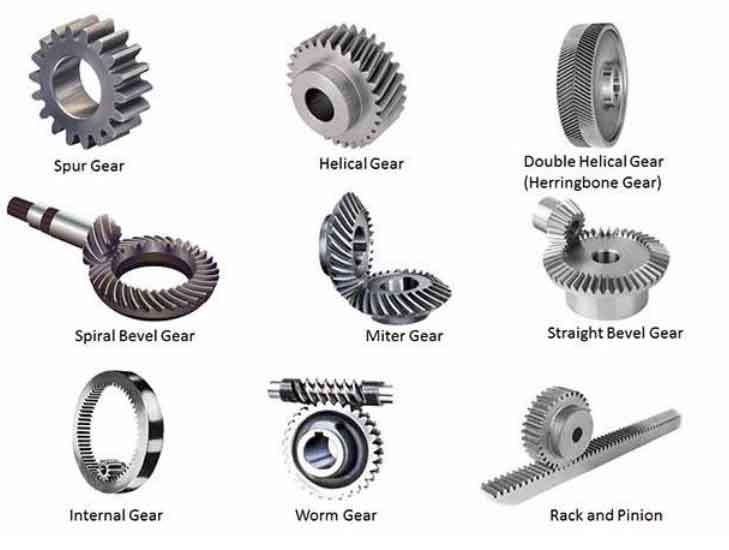Spur gears and worm gears are two common types of gears used in mechanical systems. While both gears are used to transmit motion and power between two rotating shafts, they have distinct design and operational characteristics. Let’s compare spur gears and worm gears in terms of their design, efficiency, applications, advantages, and disadvantages.

- Design:
- Spur Gears: Spur gears have straight teeth that are parallel to the gear axis. They are mounted on parallel shafts, and the teeth engage directly with each other.
- Worm Gears: Worm gears consist of a cylindrical gear (worm) with helical teeth that meshes with a toothed wheel (worm wheel) at a right angle. The worm gear is usually the driving gear, while the worm wheel is the driven gear.
- Efficiency:
- Spur Gears: Spur gears are known for their high efficiency because they have a larger contact area between the teeth, resulting in less friction and power loss.
- Worm Gears: Worm gears have lower efficiency compared to spur gears due to their sliding action and the interaction between the worm and the worm wheel. This sliding action generates more friction, leading to higher power losses.
- Applications:
- Spur Gears: Spur gears are commonly used in applications where speed reduction or speed increase is required without changing the direction of rotation. They are found in machinery, automobiles, electric motors, and many other devices.
- Worm Gears: Worm gears are often used when large speed reductions are necessary, along with the ability to transmit high torque. They are commonly found in conveyor systems, elevators, automotive steering systems, and other heavy-duty applications.
- Advantages:
- Spur Gears:
- High efficiency
- Simple design and easy to manufacture
- Cost-effective
- Suitable for high-speed applications
- Worm Gears:
- High torque transmission capability
- Compact size and high speed reduction ratios
- Self-locking property (prevents backdriving)
- Smooth and quiet operation
- Spur Gears:
- Disadvantages:
- Spur Gears:
- Cannot transmit motion between non-parallel shafts
- Prone to noise and vibration, especially at high speeds
- Limited speed reduction capabilities
- Worm Gears:
- Lower efficiency compared to spur gears
- Requires careful lubrication due to sliding action
- More complex design and higher manufacturing costs
- Spur Gears:
Spur gears and worm gears have distinct characteristics that make them suitable for different applications. Spur gears are efficient, simple, and widely used for speed transmission, while worm gears excel in high torque applications and provide significant speed reduction. It is important to consider the specific requirements of your mechanical system when choosing between these gear types.
